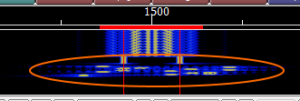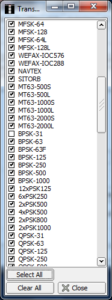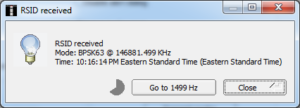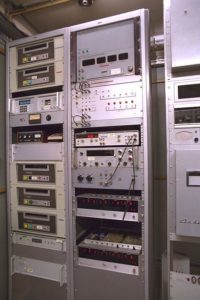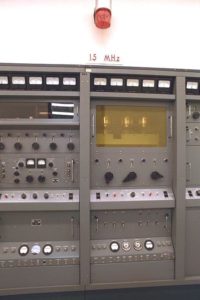One of the responsibilities of the Technical Coordinator in the Ohio Section is to submit something for the Section Journal. The Section Journal covers Amateur Radio related things happening in and around the ARRL Ohio Section. It is published by the Section Manager Scott – N8SY and articles are submitted by cabinet members.
Once my article is published in the Journal, I will also make it available on my site with a link to the published edition.
You can receive the Journal and other Ohio Section news by joining the mailing list Scott has setup. You do not need to be a member of the ARRL, Ohio Section, or even a ham to join the mailing list. Please sign up!
If you are an ARRL member and reside in the Ohio Section, update your mailing preferences to receive Ohio Section news in your inbox. Those residing outside the section will need to use the mailing list link above.
Updating your ARRL profile will deliver news from the section where you reside (if the leadership chooses to use this method).
Go to www.arrl.org and logon.
Click Edit your Profile.
You will be taken to the Edit Your Profile page. On the first tab Edit Info, verify your Email address is correct.
Click the Edit Email Subscriptions tab.
Check the News and information from your Division Director and Section Manager box.
Click Save.
Now without further ado…
Read the full edition at:
THE TECHNICAL COORDINATOR
Jeff Kopcak – TC
k8jtk@arrl.net
A ham in the section asked me about obtaining the latest Linux kernel. Not wanting to deal with problems found after the operating system install media was released, the latest stable kernel version available was what he wanted to be installed during setup.
Before I get started, if you are not familiar with Linux and have not read my April 2018 OSJ article, I encourage you to do so as some of the terminology defined will be used here.
There is not an easy answer to the question which version of the kernel is “stable.” The answer is: it depends. Depends on:
- Definition of stable. There will always be bugs and constant fixes being released. Most IT personnel take ‘stable’ to mean: the least amount of issues after testing and polishing.
- Linux distribution. How well does a kernel version work with the packages and drivers of a distribution. Availability of a new stable kernel depends on maintainers, developers, and the community’s time to update everything including programs, libraries, and drivers. Then test, document, ship, and address bug reports.
At kernel.org, there is a giant yellow button which indicates “latest stable kernel.” As of this writing, currently 5.3. Terminology on the Kernel Archives website for the different kernel types:
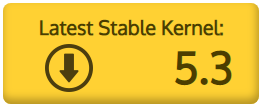 mainline = beta
mainline = beta- stable = less issues
- longterm = maintained and updated longer, typically for business production systems
- linux-next = patches for the next version of mainline, stable, longterm
Logging into a handful of updated Linux devices I have around the house, their kernel versions:
- Fedora 30: 5.2.14
- AllStar Node (Debian 9): 4.9.0
- Raspberry Pi – AllStar node (Arch): 4.14.97
- Raspberry Pi – stock install (Raspbian Buster): 4.19.66
- Wireless access point: 2.6.36
You’ll notice exactly zero are on 5.3. Even Fedora, which is considered a “bleeding-edge” Linux operating system will lag behind. Fedora is currently a single release behind the stable channel. Each distribution has their own definition of “stable” because it’s up to each distribution to maintain and update their releases.
A similar situation exists for software packages too. There will often be different versions of the same named package between different Linux distributions. Packages Managers almost always lag behind source code releases. For example, the Linux printing system software called CUPS for Common UNIX Printing System (cups.org), its latest is version 2.3.0. The latest in the Fedora 30 package manager is version 2.2.12. Therefore, 2.2.12 is the latest stable CUPS install for Fedora 30. Version 2.3.0 will be available when it is approved.
I have nearly 2000 packages installed on one of my systems! That seems like a lot but some are very small and Linux is very modular. Some are programs I installed like VLC or YouTube downloader. Others, I have no idea. Those are likely dependencies for other packages or programs pre-installed by the distribution. Anything beginning with “lib” is a shared common library. Packages prefixed with a program name are modules of that program: “cups” is the core printing system while “cups-filters” are the printer libraries for CUPS. Some are required system packages. “tzdata” is time zone data – so the system knows about different time zones, changes DST correctly, and processes leap-seconds. “Mint-themes” are themes for the Linux desktop GUI Cinnamon.
 Linux diehards will “compile from source.” To get the absolute latest and greatest features and fixes, this practice involves downloading the plain-text source code and compiling it into machine executable code manually. It takes alot of trial-and-error to get a successful compile. Not only is the program source needed but the source code for any dependencies and libraries will also be required. Most will say this is to validate the code, add their own custom modules to the kernel, or do kernel development.
Linux diehards will “compile from source.” To get the absolute latest and greatest features and fixes, this practice involves downloading the plain-text source code and compiling it into machine executable code manually. It takes alot of trial-and-error to get a successful compile. Not only is the program source needed but the source code for any dependencies and libraries will also be required. Most will say this is to validate the code, add their own custom modules to the kernel, or do kernel development.
Could someone download and compile kernel 5.3 for Fedora, Ubuntu, Mint, or any other distribution? Absolutely. Fedora has a process documented to update the kernel manually. It’s 15 pages. Or you can run a single command. You choose. But you have to deal with any issues that arise from using a custom version of the kernel and doing so is unsupported by most distributions. I have no reason to be on a later kernel version before it is made generally available by the Fedora project.
Unless there are bandwidth concerns, there is little reason to worry about installing the latest version of the OS. The package manager will handle all updates to the kernel, operating system, and programs. Updates through the package manager have been approved for that version of the operating system by those who maintain those programs. It does not mean updates are 100% bug free. There is no need to install updates the minute they are available – even every-couple-weeks will be OK. We’ve all been trained like Pavlov’s dog to install updates the minute we see that pop-up. Thanks Windows. Cherry-picking is not a good idea either – unless you have a specific reason not to install an update, like an incompatible version of Java with another program.
How to install the latest Linux OS updates? I’m a command line guy because I was brought up on the DOS and Linux command lines. Recent Linux distributions have both a CLI (command line interface) and a GUI (graphical) package manager. Once the Live CD install is complete, reboot. When logged in, open a terminal window.
For Red Hat based systems (Fedora, CentOS), run:
sudo dnf -y update
Replace dnf with ‘yum’ on older installs.
For Debian based systems (Ubuntu, Mint, Raspbian, etc), there are two commands:
sudo apt -y update
sudo apt -y upgrade
The -y option means “assume yes” to any download questions or repository updates. GUI versions vary but usually involve refreshing the repository data and selecting all updates. These should always be run after a fresh install. When complete, reboot the machine. I run these update commands about once a week, maybe more if I’m waiting for an update or fix. These can be run at any time after installation as well.
 On the topic of operating systems, the much beloved Microsoft operating system Windows 7 will no longer be supported after January 14, 2020. Windows 7 reaching end-of-life means there will be no further security updates – in theory. Even after Windows XP reached EOL, Microsoft went back and patched some “really bad” vulnerabilities in all operating systems, including XP. I can’t say the January 14th date will be extended or moved beyond that date nor can I say how long Windows 7 will remain a safe operating system to use. For the first time ever at the beginning of this year, the number of Windows 10 users just passed the number of Windows 7 users. That means about half of Windows users are still running version 7. There was talk of hackers stockpiling Windows XP exploits that would be released the minute Microsoft stopped updating XP, bringing the world to its knees. That was more hype by the media than reality. Chrome and Firefox browsers continued to support XP until a time came when they decided it was more work than it was worth.
On the topic of operating systems, the much beloved Microsoft operating system Windows 7 will no longer be supported after January 14, 2020. Windows 7 reaching end-of-life means there will be no further security updates – in theory. Even after Windows XP reached EOL, Microsoft went back and patched some “really bad” vulnerabilities in all operating systems, including XP. I can’t say the January 14th date will be extended or moved beyond that date nor can I say how long Windows 7 will remain a safe operating system to use. For the first time ever at the beginning of this year, the number of Windows 10 users just passed the number of Windows 7 users. That means about half of Windows users are still running version 7. There was talk of hackers stockpiling Windows XP exploits that would be released the minute Microsoft stopped updating XP, bringing the world to its knees. That was more hype by the media than reality. Chrome and Firefox browsers continued to support XP until a time came when they decided it was more work than it was worth.
A conversation I had recently, this person was of the mind that Windows 7 is going to stop working all together after January. Not true. It will still work as normal after January 14. You may see nag screens saying Win7 is no longer supported encouraging update to Windows 10. This is not a requirement to continue using your computer because Windows 7 will continue to run fine, you know, until the machine dies. There will be problems installing 7 on certain newer hardware because Microsoft thinks regression testing and customizations for Windows 7 security on modern hardware will introduce more problems. This time may, however, be the last chance you can upgrade to Windows 10 for free, for the life of the computer. If you qualify and have the latest Windows 7 updates installed, you will receive a pop-up from Windows saying ‘Microsoft recommends upgrading to Windows 10.’ This is a similar promotion to the one I talked about in April 2016.
In general, users have grown numb to the constant updating and bloatware of Windows 10. Believe it or not, Microsoft solved all the real problems with Windows 10. It’s called Microsoft Windows 10 LTSC (Long-Term Servicing Channel). It’s fantastic. It doesn’t force you into feature updates, doesn’t have the Windows Store crap, Cortana junk, or Customer Experience tracking. Feature updates can be delayed 18-24 months instead of having to be applied every 6 months. Not to mention Microsoft has frequently pulled back feature updates nearly as soon as they are released due to lack of adequate testing. The gotchya is you need access to a costly MSDN subscription. This version is out there if you look for it. Microsoft heavily criticizes the use of LTSC saying ‘users want feature updates.’ No, they don’t, that’s why users are seeking out a usable version of your crappie ‘modern’ operating system.
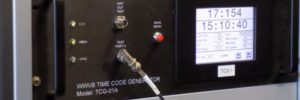
The oldest continuously operating radio station in the world deserves a grand celebration. The Northern Colorado Amateur Radio Club (NCARC) will operate a special event amateur radio station with the call sign WW0WWV, on the WWV property starting September 28 and going 24-hours a day through October 2. For information on the Special Event Station visit: wwv100.com. In addition, HamSCI and the Case Amateur Radio Club of Case Western Reserve University (W8EDU) will sponsor a “Festival of Frequency Measurement” on WWV’s centennial. They are hoping to measure 5 MHz propagation over a given day and compare measurement techniques. HamSCI’s first attempt at measurements occurred during the total solar eclipse in 2017.
Jim – W8ERW, Technical Specialist for the Ohio Section, gave an informative presentation at the Wood County Amateur Radio Club in August about ARDEN MESH networking. He talked about generations of devices used for MESH networking, including the infamous Linksys blue-box, and brought many pieces of his own equipment for demonstration. Seneca county is getting involved and finding plenty of uses for MESH. If you would like a presentation for your club about MESH, get in touch with Jim.
Thanks for reading and 73… de Jeff – K8JTK

